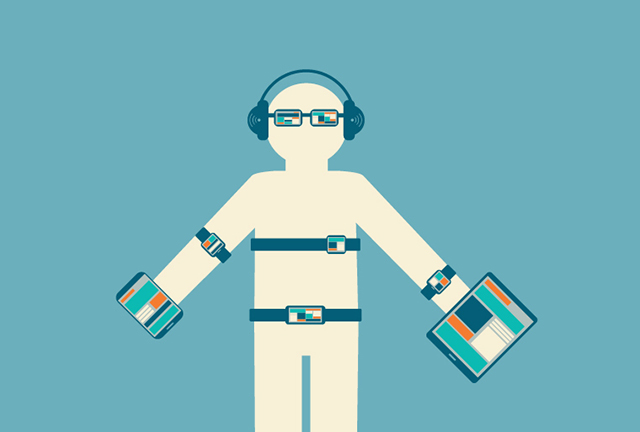Safety is an essential concern for the future of wearables

Wearables, from smart wristbands to smart clothing, hold vast potential to enhance everyday life, from a person’s health to workplace productivity.
Their potential is vast as demonstrated by predictions of the market growth for wearables, anticipated to exceed more than $100 billion (£64 billion) in annual sales by 2018, according to Generator Research. The recently launched Apple Watch only adds momentum to this promising new technology category.
Wearables are supported by three core technologies -- sensors, processing and communications. These technologies enable manufacturers to design and make compact products, such as devices that combine a pedometer, heart rate monitor and GPS in one, that are comfortable to wear and offer advanced computing capabilities. Continued advances in these three areas will lead to even smaller and more capable products.
While improvements in wearables’ underlying technologies will lead to new capabilities, this progress can bring with it certain risks, especially when combined with other technologies. In some instances, the degree of risk of a wearable device can be greater than for a non-wearable device, as use of these products can place potential sources of harm (e.g., energized electrical components) in close proximity to the human head or body. Public acceptance of wearables is contingent upon posing minimal risk to human health and safety.
Among the risks is the potential for thermal injuries. The temperature of components in electrical devices often increases through use, especially when close to the body. Wearable technology typically incorporates powerful microprocessors that can produce elevated operating temperatures. Harm associated with exposure to elevated temperatures for extended durations has led to studies assessing temperature limits.
The results indicate that reduced surface temperature limits should be set for devices, such as wearables, that may be in prolonged contact with the human body.
Materials used in the construction of wearable technologies, such as certain metals and synthetic fabrics, can contain chemicals that may cause a reaction when they come in extended contact with skin, resulting in rashes or other allergic responses. Most jewelry has a "contains nickel" or "nickel-free" label because nickel allergies are one of the most common causes of allergic skin reaction. Product labels should note if the wearable tech contains the metal.
Also, wearable technologies can expose people to electromagnetic energy. While some research results on the effects of electromagnetic radiation are inconclusive, wearable technology products should comply with human exposure requirements and limits as set by regulations that require testing of specific absorption rate of the human body.
Industry leaders must understand the safety risks of wearable technologies and undertake evaluation and testing processes applicable to the components and materials used in their products. Assessing a wearable technology can vary depending on the construction or intended use of a particular product.
At a minimum, product safety testing should include evaluating and testing a device for electrical shock and mechanical hazards. Some wearable technology products, such as medical or health and wellness devices, may be subject to additional product safety requirements.
Other tests should include wireless interoperability – helping to ensure the device has the ability to exchange information without interfering with other wireless devices. Privacy and security testing will evaluate any potential vulnerability that could make a wearable technology product a target of malicious cyberattacks. Finally, a chemical content assessment will identify chemical levels found in the devices’ components and materials.
Beyond addressing safety concerns, manufacturers can also test for energy efficiency, product performance, sustainability and reliability -- all aspects that help advance innovation and consumer acceptance of new technologies.
For example, users expect wearable technology products to operate for lengthy periods of time before recharging. Tests can gauge how efficiently devices use the available energy. Also, performance assessments help evaluate whether a device will perform as promised.
ABI Research estimates that by 2019, the world will have 780 million wearable devices. Smart glasses and heart monitors soon will be a normal part of consumer life.
While the possibilities for the wearable technology market are seemingly limitless, understanding and testing for the risks as well as anticipated consumer performance requirements and expectations is paramount for its future success.
Anura Fernando is Principal Engineer, mHealth, UL.
Image Credit: JMicic/Shutterstock
Published under license from ITProPortal.com, a Net Communities Ltd Publication. All rights reserved.